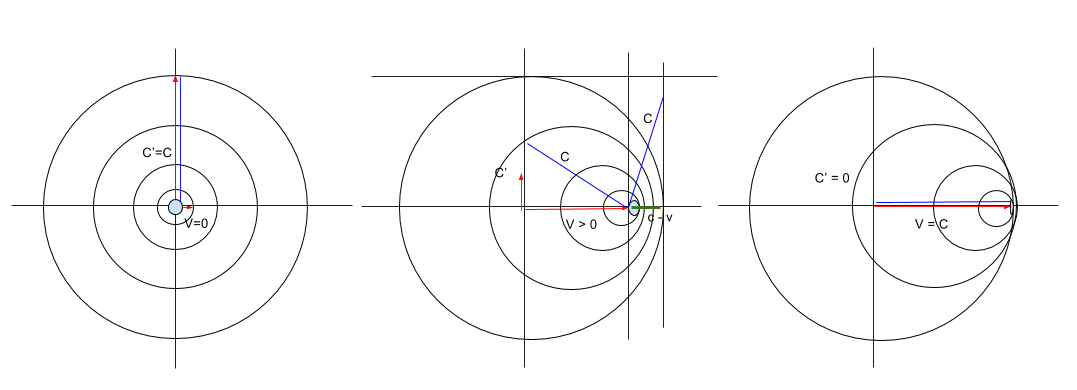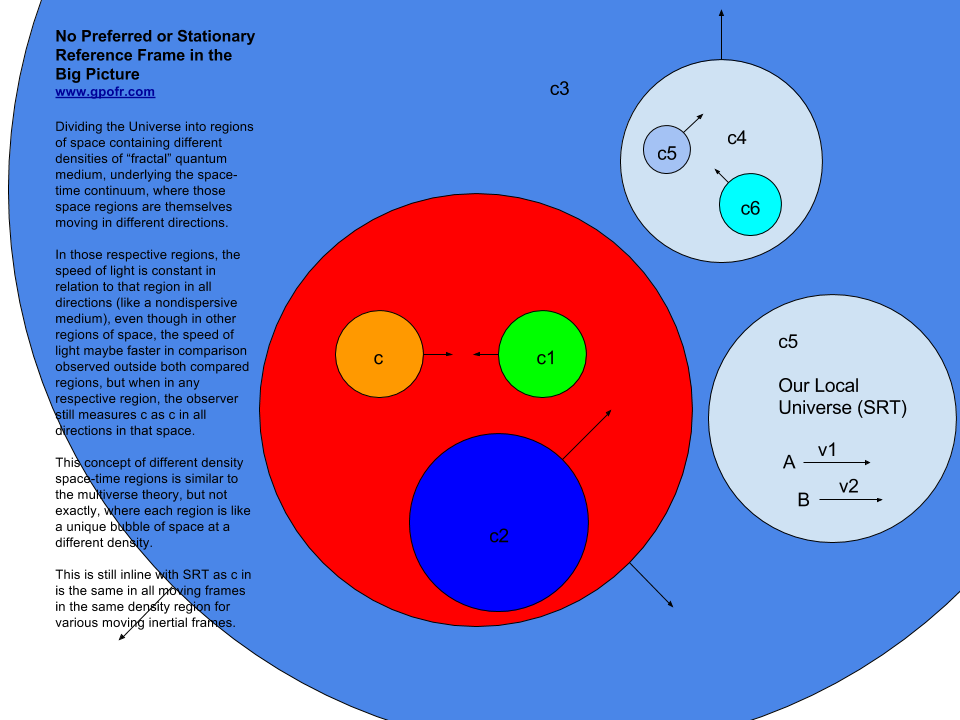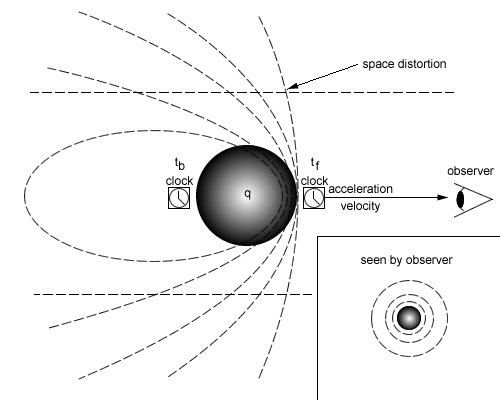For most particle and subatomic physicists, Special Relativity is beyond doubt a highly predictive and accurate theoretical framework. To them, the empirical and very physical phenomena mapped mathematically by Special Relativity Theory (SRT) is very real and very measurable. But understanding the cause for these effects is not easily intuitive if all you have is data on the measured effects, which is what leads some to question these effects and SRT individually or collectively. I truly believe the reality of these effects, and that of the best modern predictive framework mapping them, Special Relativity (SRT).
This doesn’t mean that Special Relativity (SRT) is absolutely correct void of all problems. One major problem with Special and General Relativity is the disparity between gravity and quantum theory. Another is the in ability by General Relativity Theory (GRT) to predict the anomalous rotational velocity of spiral galaxies without the use of yet discovered hypothesized Dark Matter. Then there are the extremes of SRT and GRT that have truly never ever been experimentally verified, like having a quantum particle actually achieving the velocity of c in a particle accelerator, even though they’ve come close matching the Lorentz factor velocity curvature.
In my own research into fractal scaling cosmological (FSC) framework, what became very apparent to me when unavoidably formulating the explicitly defined spatial fractal quantum medium, were the underlining mechanistic causes for the very real phenomenological effects mapped geometrically, yet superficially (topologically), by the mathematical physical framework of Special Relativity Theory (SRT) developed by Einstein. These mechanistic causes can all be explained by matter objects interacting with a medium with very specific characteristics. Those characteristics are explicitly described in FSC, but superficially some of those characteristics held by the quantum medium (QM) are:
1) is a super-fluidic medium
2) is very rigid
3) has extremely quick malleability to restore itself into a state of least density distortion
4) is not made of any known tangible material and substance
5) is deeply entrenched inside macroscopic matter objects
6) and change to the density of this medium directly affects the relative dimensions of time and space (distance)
I am certain this space-time medium is related to the ill defined Higgs Field, but FSC’s quantum medium gives a very explicit, and more importantly, unavoidable description of the medium that is not only highly intuitive but also very predictive. Basically, this medium fills all of Universal space to varying densities measured indirectly as varying gradient gravitational fields. Essentially this medium is the “ether”, but not the classical versions of the ether, which is a very important distinction. It is the modern “new” ether to quote Einstein himself in response to a challenge by Lorentz.
Read the following to get Einstein’s actual views on the ether concept, which may surprise some readers. http://www-history.mcs.st-and.ac.uk/Extras/Einstein_ether.html
The problem is Einstein didn’t explicitly describe this medium in his Special Relativity Theory (SRT), though he did re-introduce such a concept explicitly described in his General Relativity Theory (GRT) many years later using continuum mechanics. I believe this, along with changes to fundamental dimensions, introduced a level of intangible non-intuitiveness in the theory that has bothered many over the decades. Simply, SRT was void of such an “etheric” medium in the derivation of the theory whose mathematically predictive results matched empirical data…or was it really devoid of the “ether”? You see, Einstein used the Principle of Relativity and Constancy of Light in any inertial frame of reference, without the use of a mechanical ether concept, to essentially re-derive the work of Hendrik Lorentz in the Lorentz Ether Theory (LET). In fact, the Lorentz transforms are explicitly used by Einstein in SRT. Therefore, indirectly Einstein is indeed referencing an “ether” medium if only through the works of Lorentz in LET. What Einstein ingeniously did was map the effects, though in that time it’s better said he predicatively mapped these effects, independent of any assumed cause for them in order to match the empirical anomalous data of the time. It is essentially what Newton did with his gravity theory many years prior. It is called famously “Hypotheses non fingo“, or “I frame no hypotheses.“ What this means is that Einstein, like Newton, framed no assumption to the causes of the effects measured empirically. In this case it was the Michelson-Morley Experiment (MMX) and Maxwell’s Electromagnetic framework, with all it’s supporting empirical evidence, that Einstein had to map into a mathematically predictive framework…and he did so successfully, even though it appeared highly non-intuitively, especially because the transformation on the dimension of time itself which was new and perplexing to some.
Now Einstein did make some assumptions outside of a possible underlining cause for these phenomenological effects, which makes me strongly question whether he truly was devoid of the “ether” concept in formulating SRT. I truly believe Einstein used an “ether” model as a conceptual tool in his derivations. Why? Indirectly, in the era he lived in, the “ether” was a mainstream concept. The fact he referenced Lorentz’s LET work, he understood the latest contemporary “ether” concepts. Also, his assumption of the Constancy of Light involved the concept that the Speed of Light (SoL) was independent of the light’s source speed (the photon emitter). This effect is analogically and empirically observed with waves in fluidic mediums, like water. This is coincidentally truly something very “etheric” to assume independent of using a fluidic medium concept.
The point of all this is that the phenomenological effects mapped mathematically by SRT, and GRT also, can be explained with a very unique “ether” model, a model in which distortions in the density of this “ether” medium changes the dimension of time and distance relatively as observed inside and outside those density distortions relatively. This is what my own research into FSC is exploring using FSC’s quantum medium which I believe sheds good light on the gravity vs. quantum theory disparity in modern physics.
The best way to conceptualize the physical phenomena mapped by SRT is to envision the Doppler Effect using a spacecraft racing against a light beam emitted from the craft itself, where both are traveling in a smooth and even space-time continuum spatial “medium” density (quantum medium in FSC). The diagram depicts a snapshot of this race at a constant arbitrary time t1 using three different velocities for the spacecraft.  (This diagram is not geometrically correct, meaning the angles and line lengths are not accurate.)
(This diagram is not geometrically correct, meaning the angles and line lengths are not accurate.)
At v=0, no Doppler Effect is measurable.
At v >> 0, a measurable Doppler Effect is present.
And at v = c, the Doppler Effect has reached its “luminous” Mach limit.
What is important to see here is that the geometric Pythagorean representation of competing velocities also represents an aerodynamic/hydrodynamic-like compression of the medium in front of the traveling matter object. The region in front of the craft is called the bow shock, which is compressed medium due to the craft pushing through the medium using propelling force. This compressed medium is then essentially denser compared to the medium’s density if the craft was at v = 0. It is also denser simply because the object is traveling through the medium, and equally the medium is traveling through the object, at a faster velocity. Essentially the pressure and density of the medium on the object’s material structure is proportional to the velocity of the object through the medium. As an aside, this increased pressure and density of the quantum medium due to relative velocity is essentially the mechanistic cause for scaling in my fractal scaling cosmological (FSC) framework of macroscopic objects. Due to this increased density, the mechanistic cause for time dilation gives rise to time dilation and slows time down by a specific velocity dependent functional factor as to have the observer in the craft to still measure the beam of light as traveling at velocity c away from the craft, even though another more stationary observer measures a luminous Doppler Effect between the craft and the leading beam of light, meaning c – v is still measured as c by the moving observer in the craft. Mind boggling isn’t it?…or is it really. Keep in mind the mystery of these effects dissipates as you come to fully realize the mechanistic cause behind the entire dynamic (keep reading).
`c’ = c – v = sqrt(c^2 – v^2)`
In particle accelerators, electric force pushes charged quantum particles against and through this medium. This pushing through the medium can have measurable effects matching the effects mapped by SRT, such as mass increase (MI) and length contraction (LC). But it was time dilation (TD) that really set apart the effects mapped by SRT and those mapped by LET and normal aerodynamics / hydrodynamics. This is very important to note and realize. Why? Because the medium we’re dealing with here is not made of normal known matter like water or air, but is made of the stuff that makes up quantum particles (a literal quantum medium as per FSC). I call it quite justly the quantum medium. In FSC, this medium has an important self-similar fractal property, which gives significant theoretical insight into its composition. This medium is a very highly entrenched medium permeating through all macroscopic material matter objects, to varying degrees, including clocks and human brains. Meaning that an increase in the density of this space-time medium will have a direct effect on the measured and experienced passage of time at the quantum scale up (at the least).
Length Contraction (LC)
Length contraction in particle accelerators is simply an artifact of the medium’s drag experienced on charged quantum particles being propelled by very strong electric force fields in the accelerator, which utilize the particle’s charge to propel it. Essentially the artificially induced electric force propellant pushes the particle against and through the quantum medium whose drag coefficient increases as the particle reaches c. Basically, the electric force propellant is crushing the propelled object against the quantum medium, against the space-time continuum, which essentially flattens it as v approaches c.
At v = c,
`F_{applied} – F_{drag} = 0`
`l’ = l sqrt{1 – v^2/c^2}`
Mass Increase (MI)
Mass increase is caused by the same effect that causes length contraction. Essentially the increasing quantum medium drag makes the object harder to accelerate, even though the applied force to propel it stays the same.
`F_{applied} = m a_{measured}`
`m = F_{applied} / a_{measured}`
The applied force is constant, and the measured acceleration of the particle is fairly easy to obtain in a particle accelerator, but the problem is as the particle reaches c, the measured acceleration falls out of sync with the force applied to accelerate it. This disparity is measured as a difficulty to move the particle due to an assumed increase in mass, though it’s better to call this calculated mass “apparent” mass.
`m’ = m / sqrt{1 – v^2/c^2}`
Time Dilation (TD)
Like I said before, time dilation is really what sets these space-time continuum, quantum medium (qm), effects apart from other known and more tangible types of mediums (ex. water or air). In this application of a very unique version of aerodynamics/hydrodynamics, Time Dilation (TD) is caused because of an increase in the density of the quantum medium (qm) as the object’s velocity v reaches c, where the object starts experiencing an increasing drag due to a aerodynamic /hydrodynamic shock bow compression wave caused by the moving object in the region of the object itself (see diagram above). This increase in density makes all quantum particles in the object more difficult to move, due to an apparent increase in their mass. This includes the electrons in a digital clock and the electrons in a human brain. This includes the atoms in mechanical devices and the atoms in a human body. This increased quantum medium (qm) density directly affects our perception of time mechanically and neurologically.
`density_{qm} = function(v,c)`
`pressure_{qm} = function(v,c)`
`t’ = t / sqrt{1 – v^2/c^2}`
Understanding the mechanistic cause behind Time Dilation (TD) essentially demystifies the effect and time itself.


